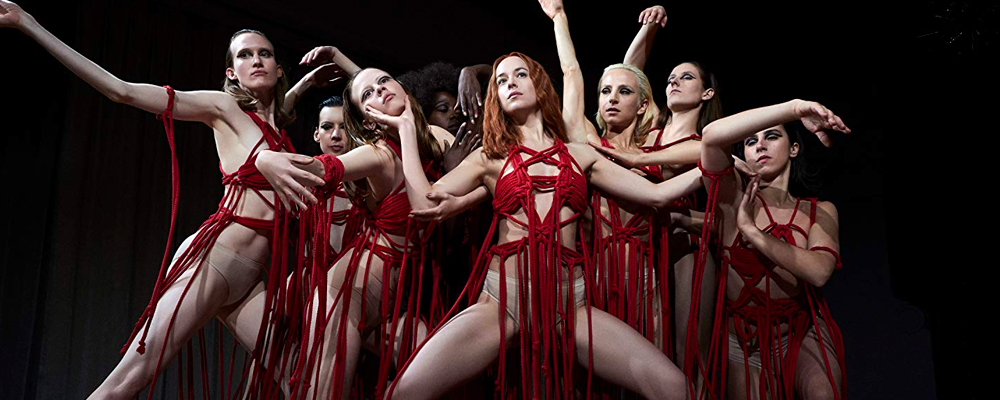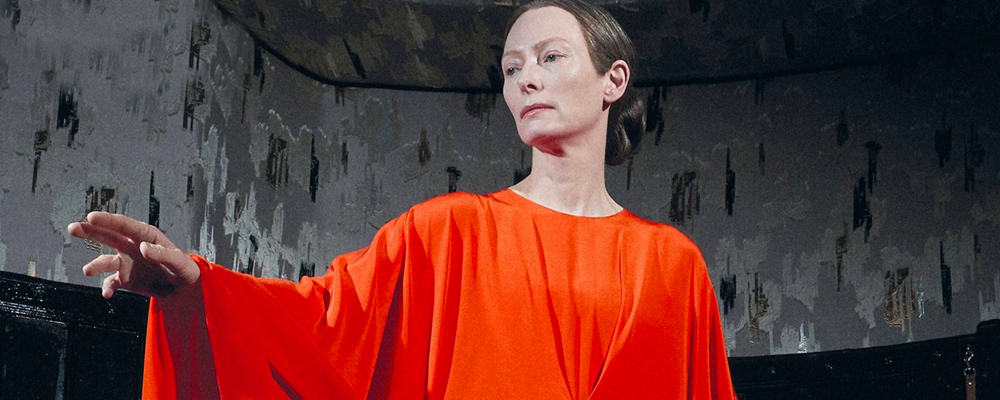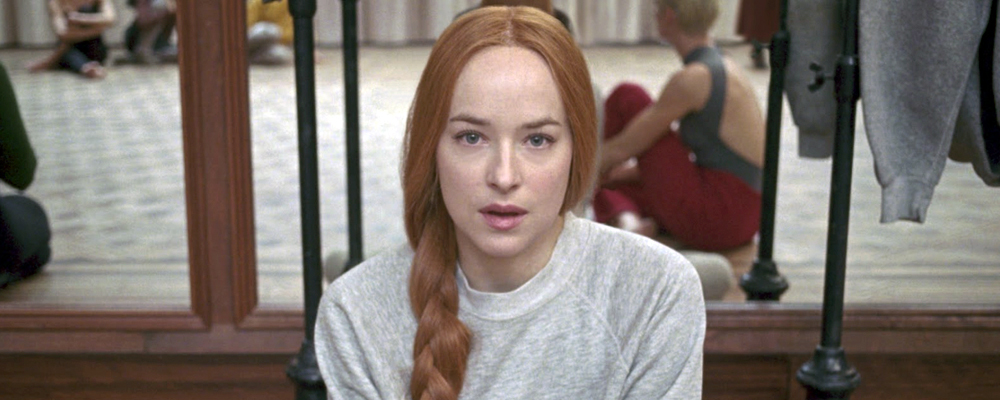Luca Guadagnino’s Moody ‘Suspiria’ Remake Evokes an Ominous Tale of Witches
Alci Rengifo
There are many ways of interpreting a nightmare. Director Luca Guadagnino, who last year offered waves of heartbreak with “Call Me by Your Name,” now evokes pure dread with “Suspiria.” The title and premise are taken from the classic 1977 cult film by Dario Argento. Dipped in vivid colors and an atmospheric score of menacing bells by Goblin, Argento’s film about a young dancer trapped in a school run by dark forces has remained a defining midnight movie experience. Guadagnino stays loyal to the idea, but he is not doing a remake. This is a new interpretation, much longer and colder, loaded with dense meaning. It may indeed be too long, but it has moments that linger in the memory.
It is 1977 in Cold War West Berlin and a manic student named Patricia (Chloë Grace Moretz), tells her psychiatrist, Dr. Josef Klemperer (played by a surprise name), about dark occurrences at the dance school where she studies. Finding little solace, Patricia disappears into the rain-soaked streets as radical students protest. Enter Susie Bannion (Dakota Johnson), an American from Ohio who arrives to study at the same prestigious dance school. The institution is run by Madame Blanc (Tilda Swinton), a quietly charismatic force who seems to float in her long dress. From the moment of her arrival Susie knows something is off in this place. We soon learn what it is: Blanc belongs to a coven of witches. Among them are Miss Tanner (Angela Winkler), Miss Griffith (Sylvie Testud), Miss Vendegast (Ingrid Caven) and Miss Millius (Alek Wek). As Susie tries to prove herself in rehearsals for a grand dance number named “Volk,” she begins to undergo strange visions and sensations. Blanc begins to initiate her into the ways of the coven, even as the coven itself fights over its leadership and targets others for revenge. Dr. Klemperer himself is a target of the witches’ wrath, for a legacy going back to the dark days of Nazism.
“Suspiria” is both the year’s most pretentious horror film and the most ambitious. Guadagnino and writer David Kajganich have taken Argento’s premise and expanded it, deepening its meaning to include fierce political subtext mixed with violent occultism. Fans of the original will scarcely recognize the world of this new vision. Instead of neon colors and fast cuts, cinematographer Sayombhu Mukdeeprom goes for cold greys and pale browns, somber shadows and rain. He brilliantly re-creates the tone of 1970s arthouse, more Luchino Visconti than Argento. Certain pans, zooms and cuts are designed to evoke the era, with few traces of any of the techniques you would find in a slick, modern horror film. Instead of campiness, Guadagnino is going for a constant, disorienting feeling of dread. If the original keeps its secret until the end, this new “Suspiria” lets you know from the beginning that witches run the dance halls. The group of women will sit around their living space hearing the news, and discussing votes for who will be head of the coven. In the film’s most grotesque moment, a dancer named Olga (Elena Fokina), openly protests and criticizes Madame Blanc during rehearsals as Susie looks on. Olga is convinced Blanc and the others know what has happened to the missing Patricia. She is soon trapped alone in a rehearsal space, her body contorts, bones crack, fluids leak as Guadagnino cuts back to Susie performing for Blanc. The other witches soon collect Olga with silvery hooks that almost look like sickles, but have the appearance of macabre, ritualistic instruments.
“Suspiria” balances moments like this, of sudden, gruesome terror, with long, meditative passages. There isn’t much suspense per se in this movie, more like a constant, ominous feeling of unease. The deliciously trashy violence and energy of the original are replaced here by threatening pans as the coven meets at a restaurant, and the camera slowly closes in on Susie, or hallucinations in dreams. Think of this film more as a gothic tone poem. Susie gets closer to Madame Blanc and soon her dreams are flooded by montages of intense, psychological imagery involving running animals, spilled blood, hands clutching the ground, distorted faces. She is being slowly groomed into the orbit of the school’s strange overseers. Unlike the original incarnation of the character, this Susie is quite open to becoming one of the coven, even as her mind goes back to her Amish roots in the United States. The dark arts are empowering her for reasons revealed in the film’s maniacal climax. The music score is by Radiohead’s Thom Yorke, who has crafted a beautifully threatening, melodic soundtrack of somberness.
Guadagnino is also going for political and social subtext with this “Suspiria.” The shadow of World War II and Nazism hangs over the Berlin of this film. Klemperer travels into East Germany to search for a long-lost wife, while the witches themselves remain vengeful and haunted by the recent past. In a sense they symbolize both a feminine will to power and history’s vengeful furies. Political terrorism is always present in the background as Red Army Faction militants of the period hijack airplanes and carry out bombings. One excuse given to the dance students for Patricia’s disappearance is that she might have left to join the radicals. This was a period when young Germans joined the movements of the 60s and 70s to rebel against their parents’ and grandparents’ legacy, and who were aware former Nazi officials were still in government. The witches have not forgotten the past and have Klemperer in their sights for specific reasons. Even the main dance number Madame Blanc is preparing with her dancers is named “Volk,” a word loaded with much meaning when it comes to Nazi racial ideology.
But the slow dread eventually leads to a stunning, bloody, satanic conclusion. Horrific things will be found in the attic. The eventual performance of “Volk” is shot with the rhythm of a sacrificial ritual. Strange rituals will take place, sagging, terrifying personas in dark glasses are summoned forth, dark powers conjured and much butchery will flood the school’s basement with blood. Guadagnino renders an appropriate homage to Argento here while expressing a quite powerful statement about the demons of history, and how beneath the veneer of a stable society there are always new monsters waiting to emerge.
How classic horror fans will respond to “Suspiria” is hard to say. It is not a traditional scare fest with pounding speed. Instead it is a long requiem. It gets under your skin, even with performances by Tilda Swinton and Dakota Johnson which are pure atmosphere. Johnson is no longer the lovelorn tool of “Fifty Shades of Grey,” here she plays a reserved individual slowly being consumed by a gothic environment. Swinton has a striking charisma, observing Johnson first like prey, then connecting with her like a pupil.
There indeed times when one might wish Guadagnino had been willing to cut a few minutes. But this is not a forgettable movie. It has scenes with a strange, lingering power, mixed with Yorke’s evocative music. The ending alone is unforgettable. Like few recent films, it uses elements of terror and drama to capture the nightmare of history.
“Suspiria” opens Oct. 26 in select theaters and expands Nov. 2 nationwide.






